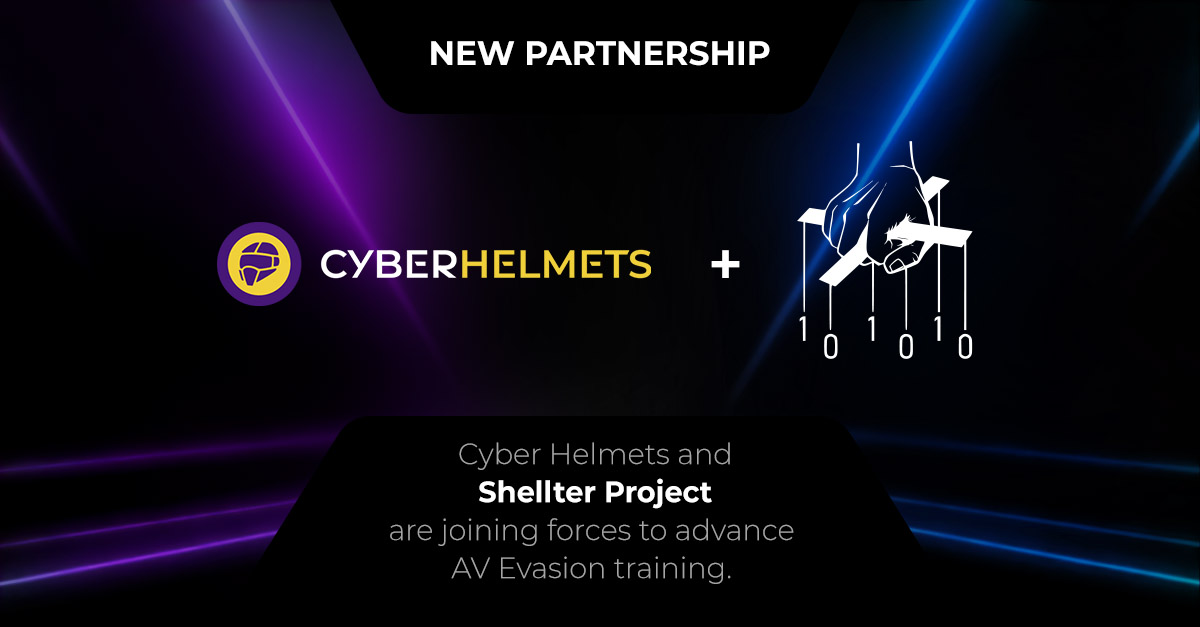At Cyber Helmets, we’re on a mission to deliver hands‑on, real‑world security training that mirrors the latest adversary methodologies. Today, we’re excited to announce a powerful new partnership with Shellter Project—the creators of Shellter Elite—bringing cutting‑edge AV/EDR evasion tooling directly into our Red Team and Advanced Evasion programs.
The value behind the collaboration:
By combining Cyber Helmets’ deep red teaming training expertise with Shellter Project’s industry‑leading evasion tooling, we aim to advance the state of offensive security and:
- Enhance security training programs
Embed Shellter Elite into our courses for hands‑on instruction in advanced evasion and adversary simulation. - Drive collaborative R&D for clients
Explore joint research initiatives to develop custom evasion techniques and tooling tailored to enterprise needs. - Engage the offensive security community
Co‑host public webinars, workshops, and demos to share insights from real‑world testing and foster best practices. - Promote and adopt Shellter Elite
Showcase its real‑world efficacy and ease of use in professional lab environments to establish it as the go‑to endpoint evasion solution. - Enable enterprises
Deliver co‑branded training packages and secure lab environments that allow organizations to assess and improve their detection posture using Shellter‑based testing. - Align joint commercial efforts
Offer bundled training and licensing packages. - Deliver specialized training sessions
Empower the Shellter Project team to lead deep‑dive technical workshops on advanced usage scenarios.
Key takeaways:
- Interactive lab environments
Simulated scenarios featuring AV/EDR controls, encrypted payload hosting, and real‑time evasion challenges. - Guided evasion scenarios
Step‑by‑step exercises in static binary obfuscation, dynamic memory transformation, and beacon loader creation using Shellter Elite. - Beacon‑ready loader generation
Rapidly produce Cobalt Strike and other framework‑compatible loaders with a single command. - Exclusive community access
Trial licenses for Shellter Elite on a demo environment.
A new era of AV Evasion training
This partnership represents more than just integrated tooling—it’s a shift in how offensive security skills are taught and practiced. By combining our expert instruction with Shellter Project’s evolving evasion framework, learners will gain the confidence and context needed to execute stealthy operations in real‑world environments.
Get started today
For inquires about enterprise solutions reach out to our team for more details.













